
Children love pretend play, and a play kitchen cafe is the perfect setup to inspire creativity, social skills, and hours of fun. Whether you’re setting up a cozy corner in a real cafe, designing a play area at home, or creating a fun space for a daycare, the right play kitchen setup can make all the difference. But how do you design a space that is both functional and enchanting for little ones
From Montessori-inspired stations to boutique-style setups, these play kitchen cafes are designed to be immersive, beautiful, and above all, fun. We’ll walk you through a variety of ideas, each with its own unique theme and approach to pretend play. Whether you prefer a rustic, homey feel or a sleek, modern design, these ideas will spark inspiration for your own little chef’s dream cafe.
The Cozy Corner Cafe
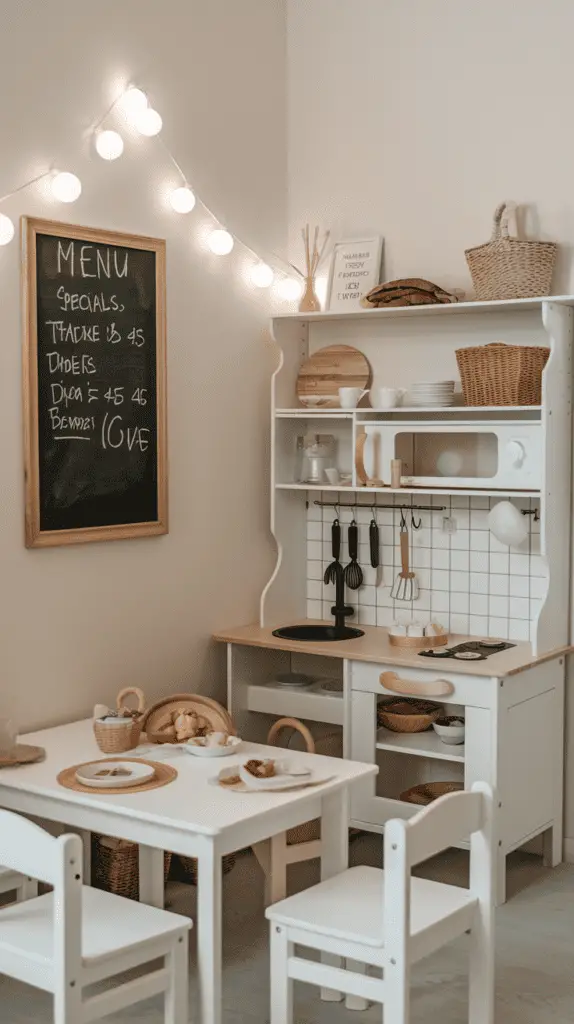
If space is limited, a cozy corner cafe is the perfect solution. A small nook can transform into an inviting play area with just a few key elements. Start with a compact play kitchen set and add a small counter for pretend orders. A chalkboard menu on the wall allows kids to write out their daily specials, encouraging both creativity and early writing skills.
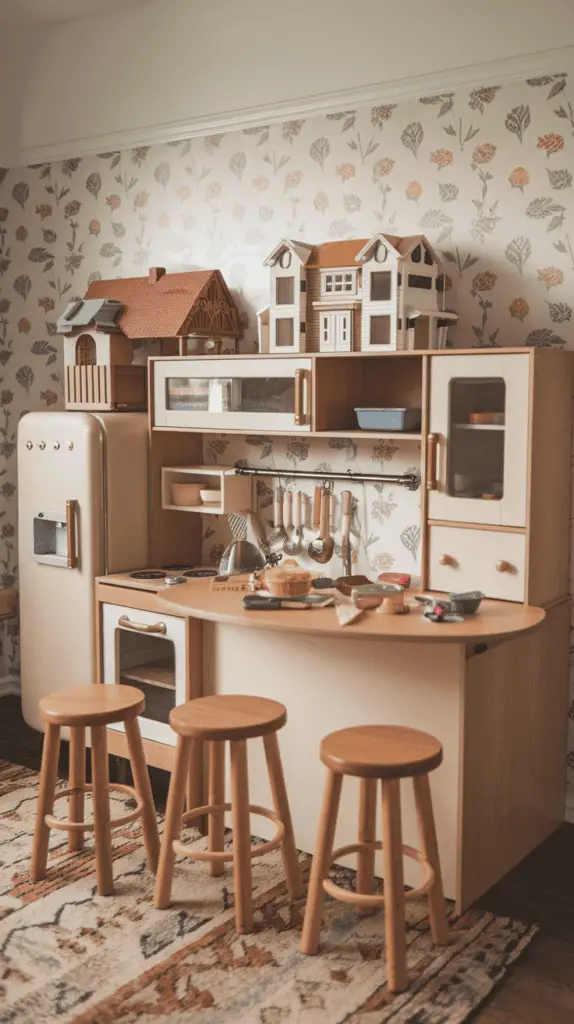
To make the space feel even more authentic, add some simple shelving stocked with play food, baskets, and mini dishware. Soft lighting or string lights can enhance the cozy atmosphere, making it feel like a real neighborhood cafe. A little seating area with child-sized chairs completes the look, inviting kids to serve up their imaginary meals.
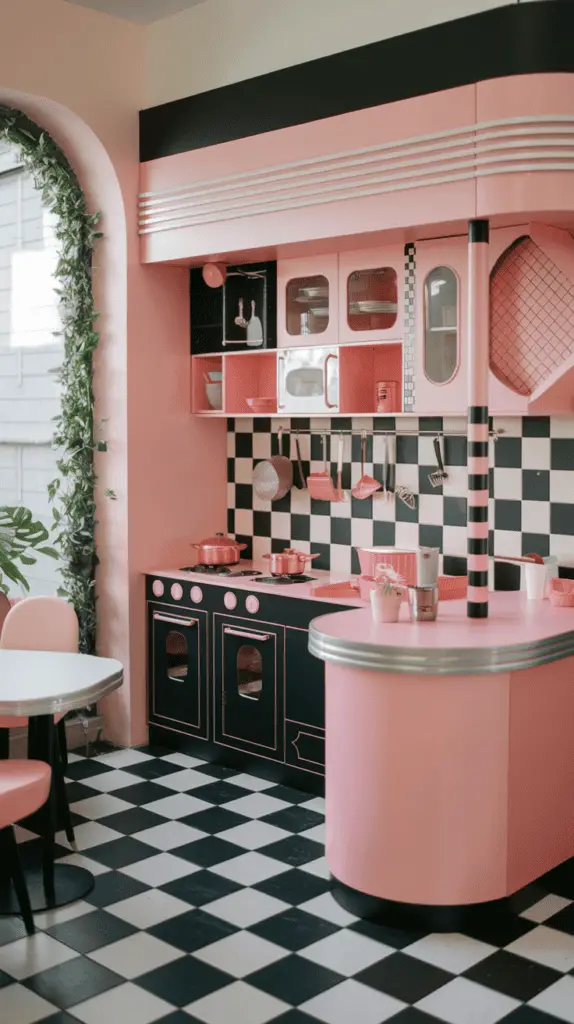
This setup is ideal for playrooms, daycare centers, or even an unused corner of a living area. It encourages independent play and social interaction while fostering a love for pretend cooking and serving.
The Montessori Market Cafe
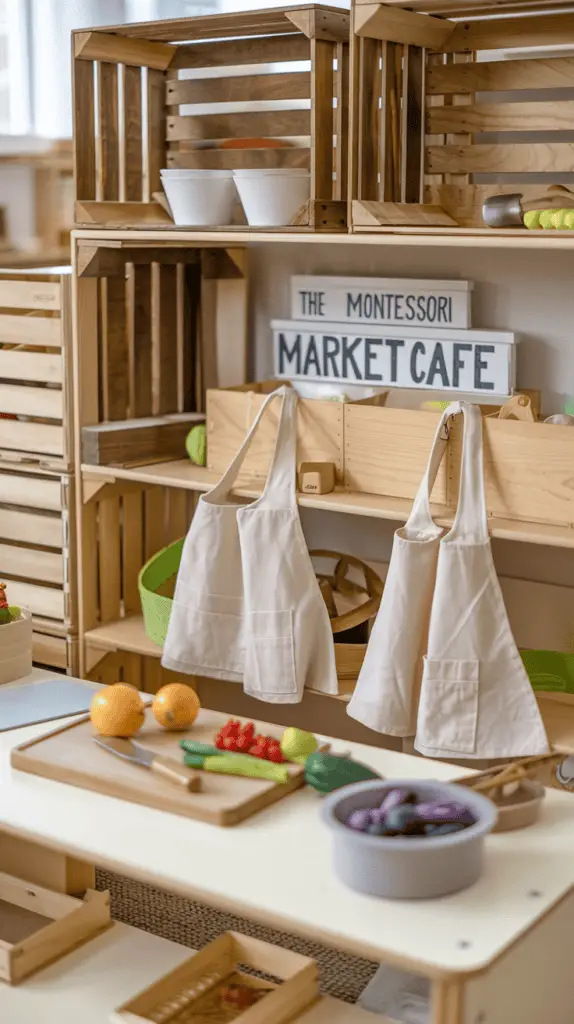
A Montessori-inspired play cafe focuses on independence and real-life skills. This design integrates child-friendly open shelving, real mini kitchen tools, and labeled containers to help children learn organization and responsibility. Natural materials like wooden crates for food storage and cotton aprons add a touch of realism and warmth.
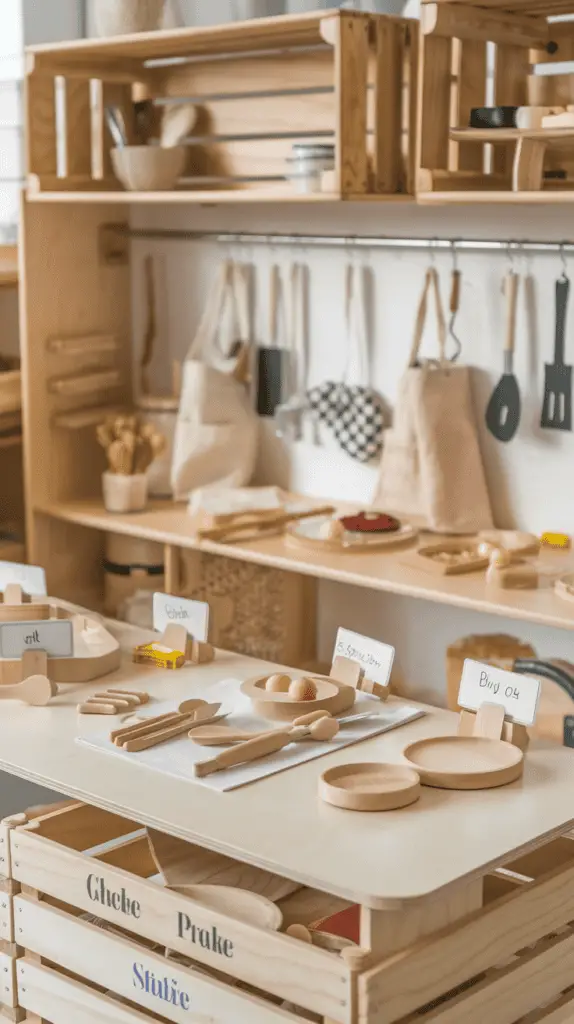
Instead of plastic food, opt for wooden or fabric alternatives that provide a tactile experience. A low table can serve as both a prep station and a serving counter, where kids can practice cutting pretend fruits and vegetables before plating up meals for their customers.
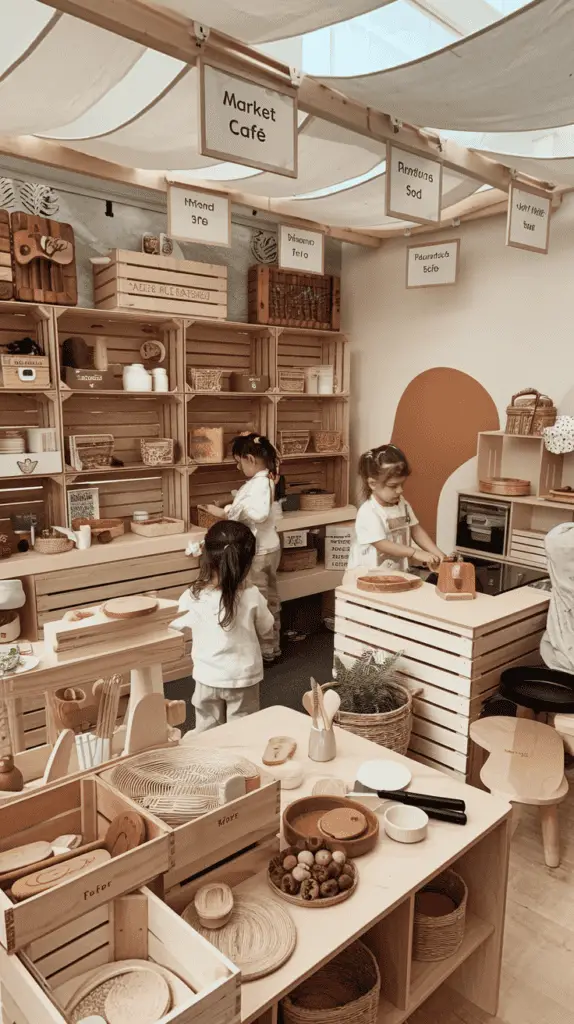
This design works particularly well in a Montessori playroom or a home learning environment. It encourages children to take ownership of their space and practice practical life skills, all while engaging in fun, imaginative play.
The Boutique Play Cafe
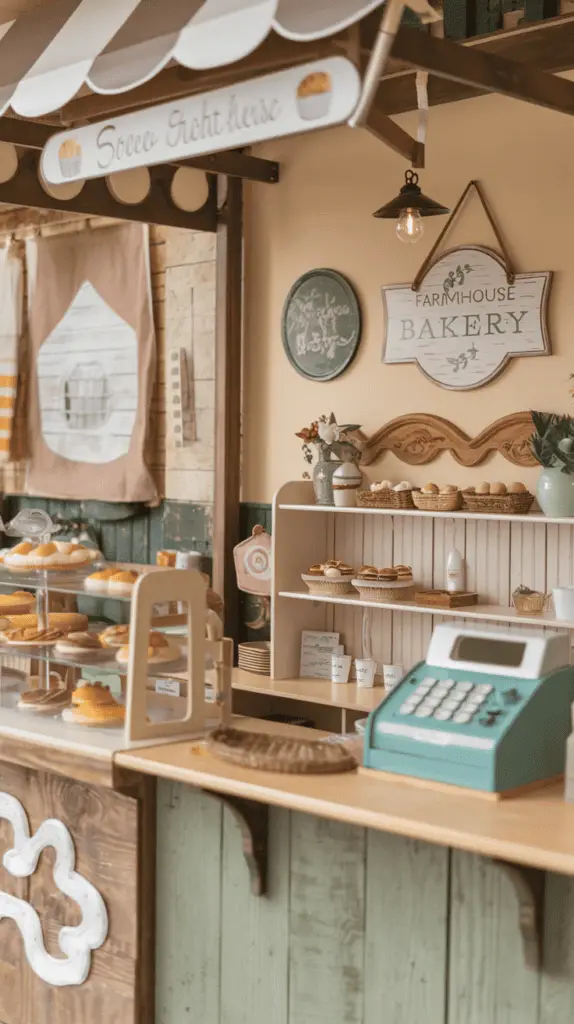
If you love stylish, themed spaces, a boutique play cafe is the way to go. Think of a charming little cafe setup with a unique theme, like a Parisian patisserie, a rustic farmhouse bakery, or a modern urban coffee shop. The key is in the details – decorative wall art, stylish mini menus, and color-coordinated accessories all help bring the theme to life.

Choose a color palette that matches your chosen theme, and consider adding small decor elements like a play cash register, a cute sign with the cafe’s name, and display shelves filled with pretend pastries. A little cafe awning or curtain can add an extra dose of charm, making the space feel like a real business.
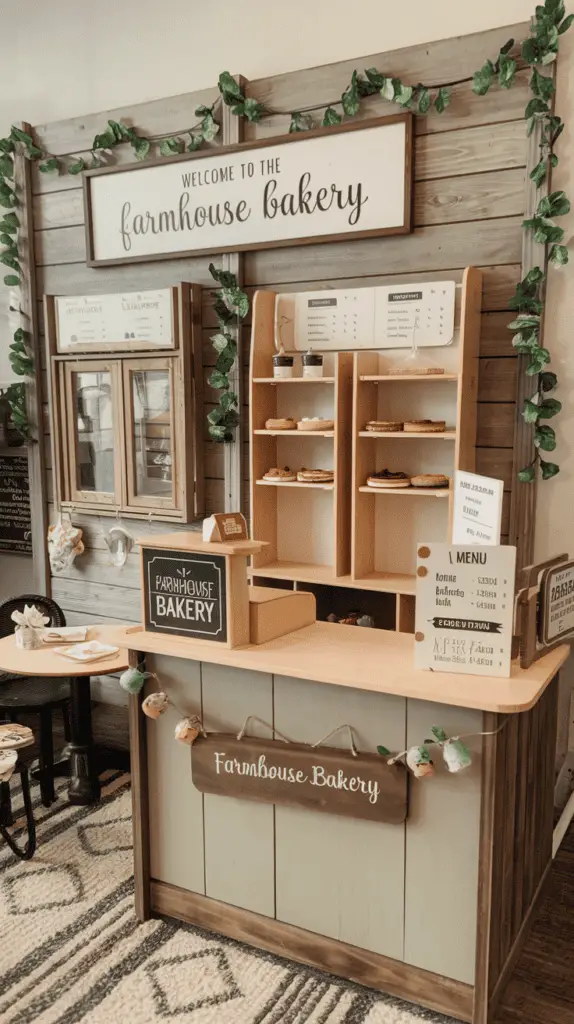
This setup is perfect for those who want a visually appealing play area that doubles as a beautiful decor element in a playroom or community space. It encourages kids to engage in role-playing, customer service interactions, and creative storytelling.
The Play Store and Cafe Combo
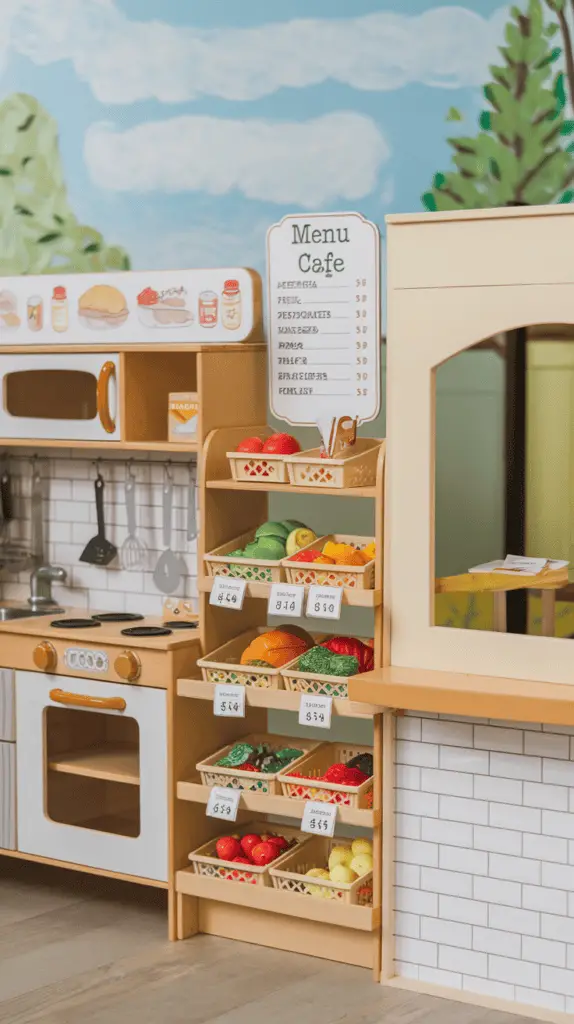
A play kitchen cafe can be even more exciting when paired with a pretend grocery store. This design allows kids to shop for ingredients before heading to their play kitchen to cook up their meals. Use small shelves or baskets to create a mini grocery section stocked with play food, price tags, and a little register.
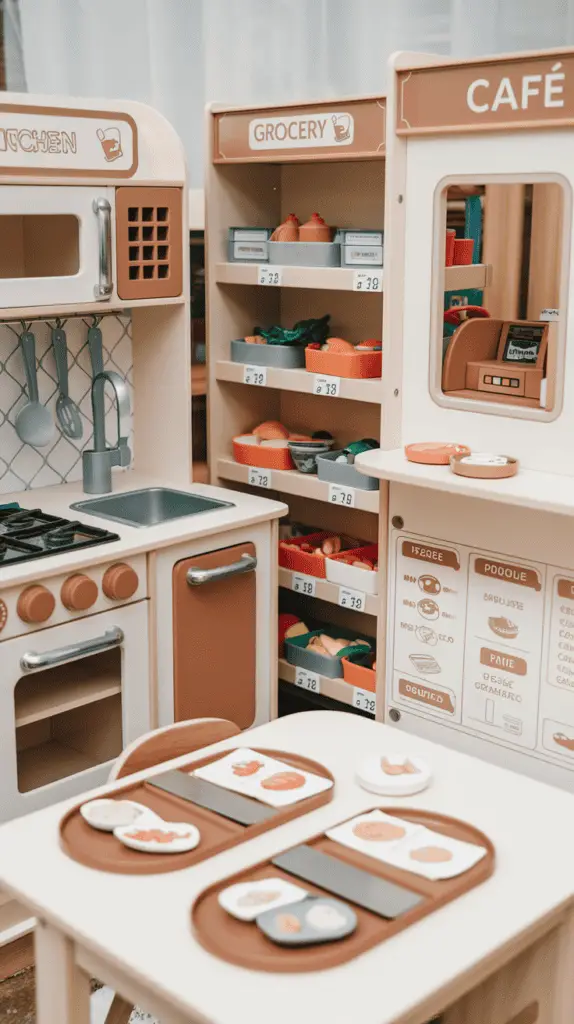
For the cafe area, a simple counter with a window cutout can mimic a real cafe takeout spot, where little baristas can serve up pretend coffee and treats. A menu board listing different options enhances the experience, and adding small trays for food delivery can make the play feel even more real.
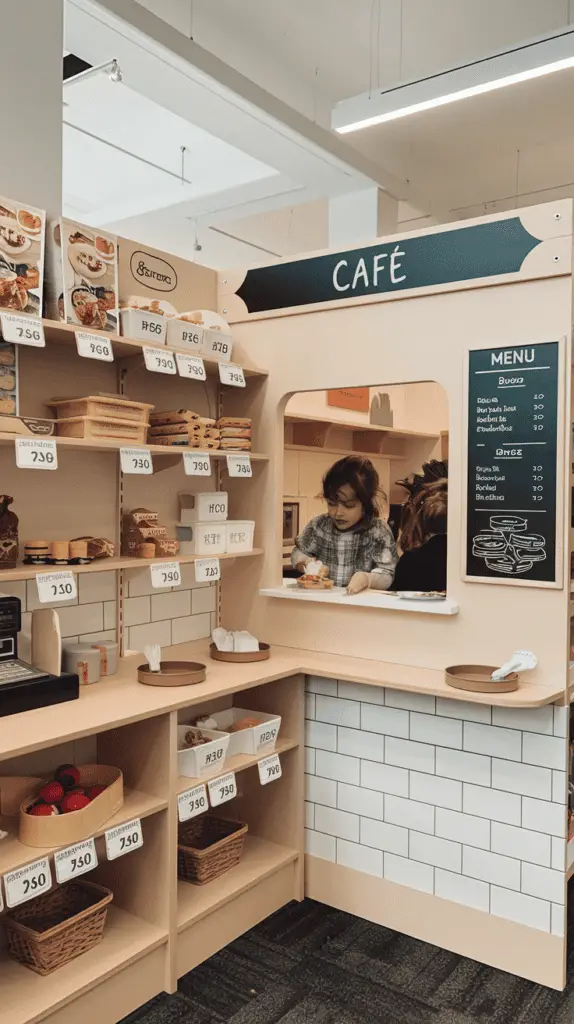
This setup works well for both home play areas and public spaces like libraries or cafes with kid-friendly corners. It’s engaging, educational, and packed with opportunities for creative role-playing.
The Interactive Kids Cafe
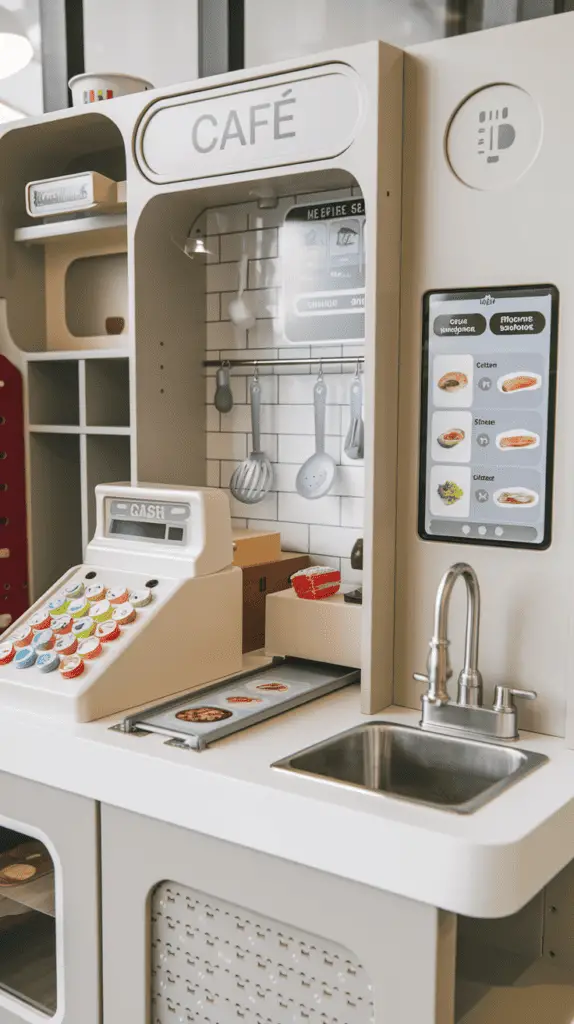
For a truly immersive play experience, an interactive kids cafe takes pretend play to another level. This design incorporates elements like play cash registers with working buttons, interactive recipe cards with picture instructions, and a digital play screen where kids can pretend to take orders or create virtual recipes.
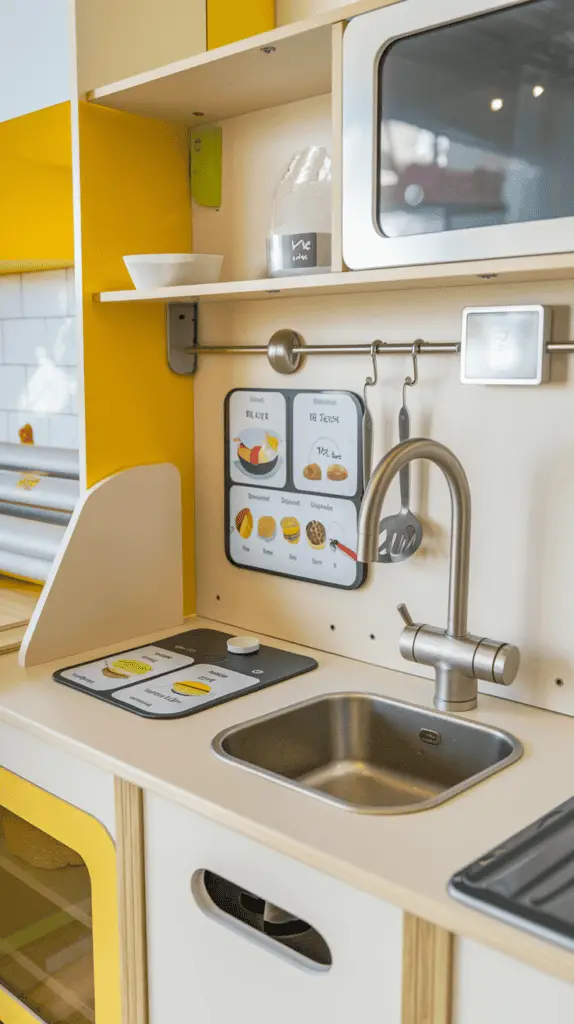
Adding a play sink with a working faucet (using a safe water circulation system) enhances the real-world feel. Some setups even include a small conveyor belt for pretend food preparation, making the experience feel just like a real kitchen.

This type of play kitchen cafe is ideal for families who want to integrate a bit of technology into their child’s play while keeping the focus on hands-on learning and creativity. It works well in children’s museums, interactive play spaces, or home playrooms with a focus on educational play.
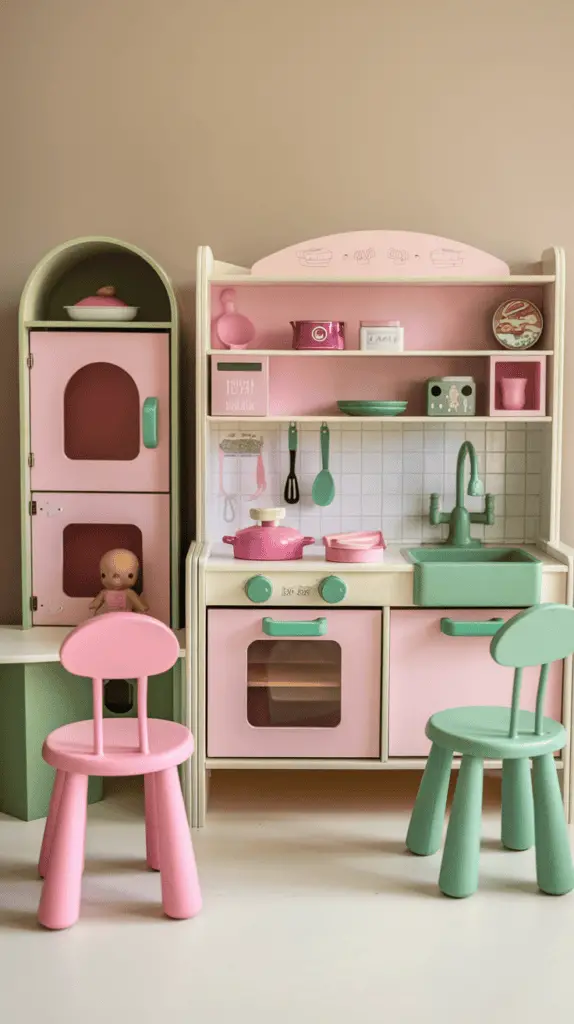
Final Thoughts
A well-designed kids play kitchen cafe is more than just a play area – it’s a space where creativity, social skills, and imagination flourish. Whether you opt for a cozy corner setup, a Montessori-inspired station, a stylish boutique theme, a play store and cafe combo, or a fully interactive design, the key is to make the space engaging and inviting.
The best play kitchen cafes encourage children to explore, role-play, and learn through hands-on experience. They create opportunities for pretend play that mimic real-life scenarios, fostering independence and problem-solving skills along the way. No matter your space or budget, there’s a perfect kids play kitchen cafe design waiting to be brought to life. Which one will you create?
